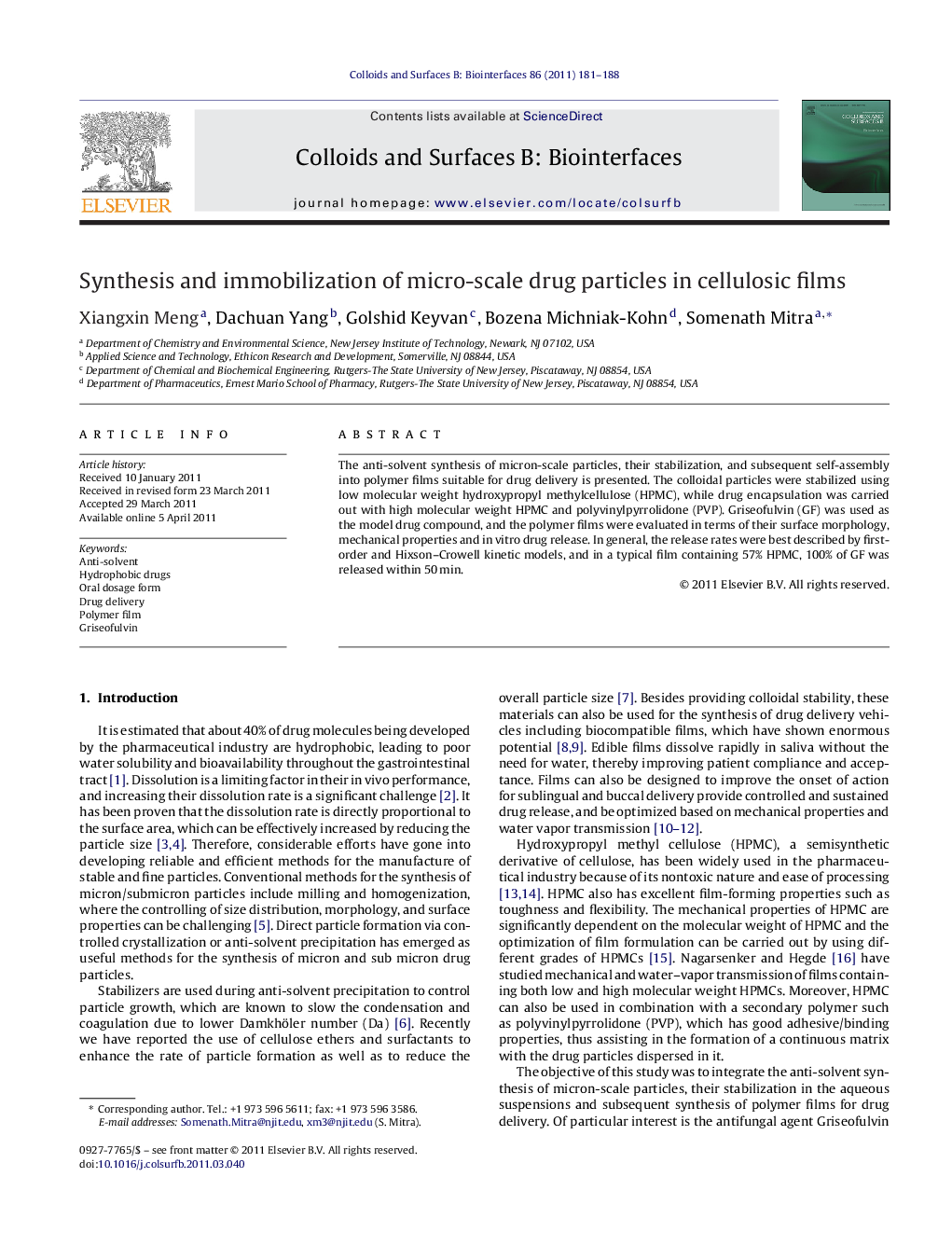| Article ID | Journal | Published Year | Pages | File Type |
|---|---|---|---|---|
| 601297 | Colloids and Surfaces B: Biointerfaces | 2011 | 8 Pages |
The anti-solvent synthesis of micron-scale particles, their stabilization, and subsequent self-assembly into polymer films suitable for drug delivery is presented. The colloidal particles were stabilized using low molecular weight hydroxypropyl methylcellulose (HPMC), while drug encapsulation was carried out with high molecular weight HPMC and polyvinylpyrrolidone (PVP). Griseofulvin (GF) was used as the model drug compound, and the polymer films were evaluated in terms of their surface morphology, mechanical properties and in vitro drug release. In general, the release rates were best described by first-order and Hixson–Crowell kinetic models, and in a typical film containing 57% HPMC, 100% of GF was released within 50 min.
Graphical abstract. The anti-solvent synthesis of micron-scale particles, their stabilization, and subsequent self-assembly into polymer films suitable for drug delivery was accomplished. Raman chemical mapping was used to image and map the top surface of drug film.Figure optionsDownload full-size imageDownload as PowerPoint slideHighlights► The integration of anti-solvent synthesis of micron-scale particles, their stabilization in the suspension and subsequent film formation has been demonstrated. ► HPMC-LM was an excellent at stabilizing GF in suspension and HPMC-HM and PVP were necessary for making continuous films. ► In vitro drug release profiles showed compelete drug released at the end of 50 min.
